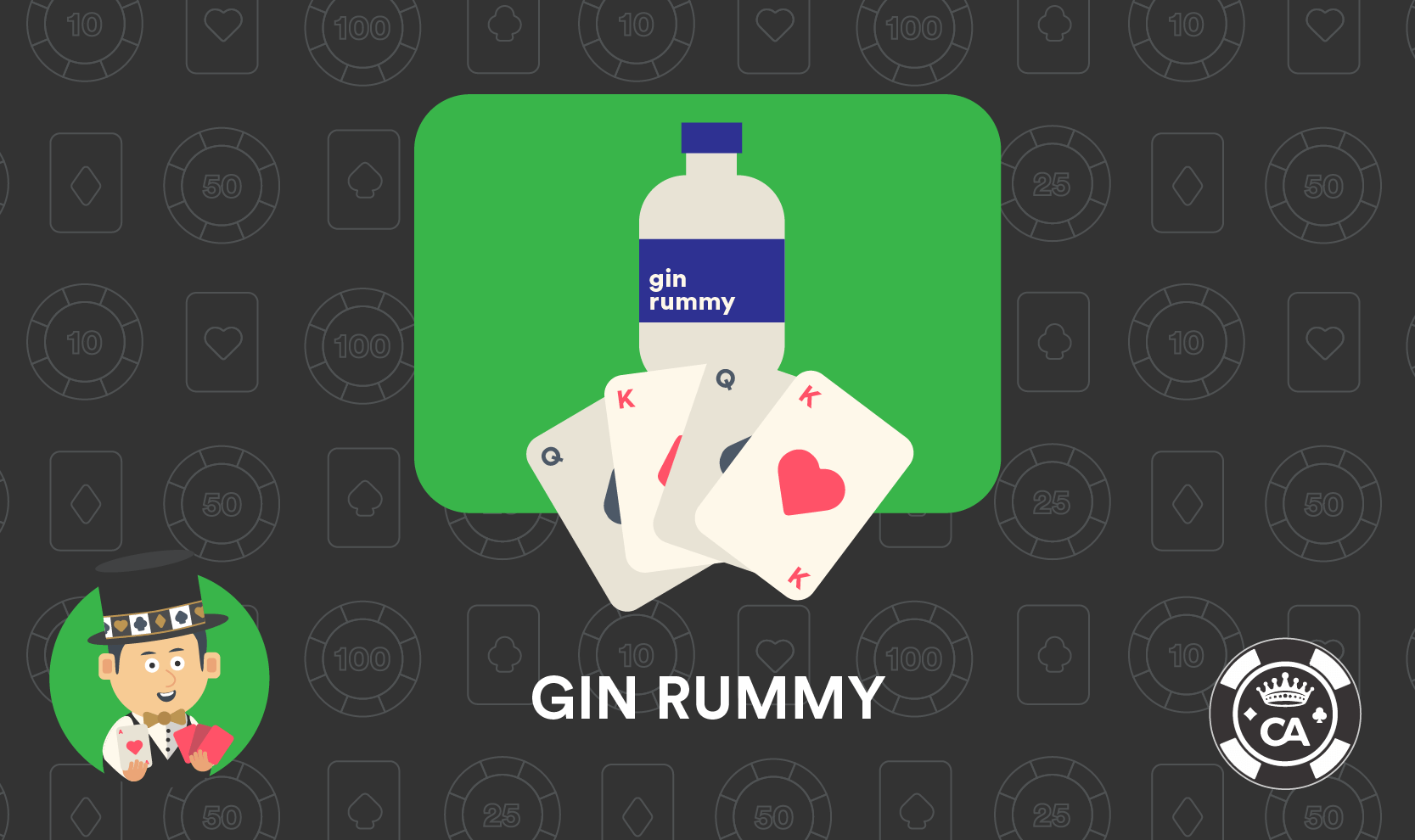Playing Gin Rummy with friends, family, and millions of players worldwide has never been easier! The objective is simple: Build a winning hand before your opponent. Match cards into sets of the same rank (7, 7, 7) or runs of consecutive cards in one suit (7, 8, 9). Build a completely melded hand to Go Gin and claim your victory, or Knock to end a game when unmatched cards total 10 or less and risk being Undercut. Hone your skill, test your luck, and challenge friends and strangers alike in the world’s most popular Gin Rummy app: Gin Rummy Plus!
Featured Game Gin Rummy Plus
.jpg)
Location strategy in Gin rummy is not characterized by complex rules and numerous nuances. Its popularity all over the world is explained by the fact that users can master its rules just a few minutes. However it is not as easy as it might initially seem to master the optimal and advanced top strategy that will help you to win more frequently. How to Play Gin Rummy. Gin Rummy is a card game for 2 to 4 players. A standard deck of 52 playing cards is used with no jokers. Aces are always low and in terms of points, all picture cards are worth 10 and the rest are worth the number of pips on the card – so 5 is worth 5 points, 8 is worth 8 points, etc.
- Gin rummy card game With names such as Stu Ungar and Bill Ingram on the playing roster, gin rummy is no slouch’s game. Whether you’re playing Gin rummy online or at a land-based casino, the rules are the same. The object of the game is build melds, or groups of related cards.
- Playing Gin Rummy with friends, family, and millions of players worldwide has never been easier! The objective is simple: Build a winning hand before your opponent. Match cards into sets of the same rank (7, 7, 7) or runs of consecutive cards in one suit (7, 8, 9).
Gin Rummy is a high speed version of Traditional Rummy. It has the same basic rules but has its own characteristics.
Both players are dealt ten cards and the deck is then laid down with the top card turned upright.
Play pans out as in Traditional Rummy:
- drawing a card
- forming melds in his or her hand
- discarding a card

Note:
Melds are not played on the table as soon as they are formed in Gin Rummy.
Play continues until one of the following Gin Rummy variations occur:
- a player 'Goes Gin' - the round is then over and scores are recorded.
- a player 'Knocks' - the other player may 'Lay-Off' for one turn before scores are calculated. Note that the 'Knocker' is not allowed to 'Lay-Off', just the opponent.
Gin Rummy Terminology
Going Gin: If a player melds all his cards at once with no further cards remaining. This gives him an automatic bonus and also denies his opponent the opportunity to 'Lay-Off', increasing his score further.
Knock: Players have the ability to 'Knock' but are not compelled to do so. Here they are allowed to meld only some of their hand, as long as their remaining hand (the 'Deadwood' -see below) scores less than ten. Knocking forces a conclusion to the game.
Deadwood: This is the remaining card or cards after a meld or melds have been placed on the table.
Deadwood Count: The value of the Deadwood cards.
Lay-Off: Once a player has 'Knocked', the opponent has one last opportunity to 'Lay-Off' - this is adding to melds already on the table and/or laying down new melds. The player should aim to get rid of as many cards as possible, reducing their 'Deadwood Count'.
Undercutting Bonus: Following on from a 'Knock' the opponent can 'Lay-Off' cards, giving them a chance to reduce their score. It is then possible for them to 'Undercut' the 'Knocker' by having a lower 'Deadwood Count'.
Scoring
Casino Gin Rummy Game Board
In Gin Rummy it is the highest score that wins.The scoring is the same as for Traditional Rummy, with the exception of the aces, which are always scored as one, never eleven.
Scoring is calculated as follows:

a) When a player 'Knocks':
Online Casino Gin Rummy
- The 'Knocker's' 'Deadwood' is added up.
- His opponent is given the chance to 'Lay-Off' and then his 'Deadwood Count' is also calculated.
Casino Gin Rummy Poker
After a 'Knock', the winner is declared and scoring applied, depending on the difference between both 'Deadwood Counts'.
- If the opponent's 'Deadwood Count' is equal to or higher than the 'Knocker', then the 'Knocker' is the winner and receives points totaling the difference between both 'Deadwood Counts'.
- If the opponent's 'Deadwood Score' is lower than the 'Knocker' then opponent has 'Undercut' the 'Knocker' and the opponent wins the game. The opponent receives 25 bonus points plus the difference between both 'Deadwood Counts'.
b) When a player 'Goes Gin':
- The 'Deadwood Counts' of both players are totaled.
- The totals are added together to become the winner's score. A 25 point bonus is also added to this total.
Game, Line and other bonuses are also awarded - check the rules of each rummy hall to establish how these work.
The points system can also vary from the rules cited above, so make sure you familiarize yourself with these before playing.
Gin Rummy Casino
Score sheets are used to keep track of both players' totals.